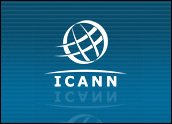
During the last century, mega corporations throughout the world followed the prime rules of building corporate image and name identity in the strictest sense.
Their goal was simply to achieve an elite, world-class image by having their name and logo brightly displayed on skyscrapers in every city. They ran massive advertising campaigns to promote their identity and claimed ownership to specific colors and designs, all in an effort to create a single visual global icon. They used every opportunity, from naming stadiums to sponsoring parades.
The objective was simple: to demonstrate their exclusive power and their domination by big image.
Internet-Savvy Age
This expensive shotgun approach often created successful and powerful images for a period, but at times, it also created the corporate images of rigid, monolithically dysfunctional giants.
The last decade can easily summarize the winners and losers of this expensive corporate identity game, but in an Internet-savvy age of global cultures, this approach has proven to be unsuitable for today’s corporations. Today, there is a major shift in thinking on how to build a major corporate personality.
To play the game, one must clearly figure out the secret powers of e-commerce and the role of new technologies in contrast to traditional print and old-fashioned, mass-advertising driven models. New rules for building global corporate images demand serious re-evaluation. It is all about being discovered with speed and efficiency or sluggishly lost in oblivion.
Secret Powers of Cyber Domination
The new phenomenon of cyber-branding is driving today’s corporate identities. It is mainly focused on how to dominate the corporate accessibility and showcase the colorful image of a corporation, all via cyber-media.
For this reason, corporations like Yahoo, Amazon, eTrade, eBay and millions of others worldwide do not conjure up the images of overpowering logos on skyscrapers, specific colors, irrelevant and forgetful taglines or repetitive advertising campaigns. Rather they are almost invisible in the traditional corporate identity sense.
These emerging cyber-giants are quietly working and residing in our laptops and personal digital assistants (PDAs), snug and warm in our pockets. Who knows if these little icons come out in the middle of the night when we are fast asleep and clean our dishes too? This is how corporate accessibility and images will be built in the cyber-economies of the globe — because it is fast, user-friendly and extremely cheap.
‘We Are Very Big, You Are Very Small’
In the old days, status- and symbol-driven corporations conveyed their powers; they offered a limited-access, 9-to-5, Monday-through-Friday format, while appearing formal, boring and, at times, unaffordable. However, in cyber-domination, a corporation provides interactive, 24/7, user-friendly service that focuses on being extremely economical and efficient. This can be achieved very economically in cyberspace, by constantly emulating a corporate presence in a viral formation.
Corporations, under the new rules, are developing sophisticated Web presence and working on global portalization of the entire corporation. In this major shift, there is a serious decline of the traditional collateral material that corporations produced under the old rules of corporate identities: intricate brochures, thick catalogs and colorful annual reports. Rather, all imaging and information is being transferred to user-friendly, sophisticated Web sites — where information changes in an instant and services are available at bullet speed.
‘The World Is Our Customer — Really?’
Corporations practicing the old corporate identity rules were absolutely convinced that the entire globe was their potential target audience. In every instance, these corporations used general broadcast and shotgun methods to relay their messages, including skyscrapers, billboards and bulky brochures, all addressing the “global occupant.”
Now, cyber-domination provides custom information to a select, potential client base, located in specific demographics worldwide. The message is highly pertinent, clear, precise and user-friendly, offering instant results.
Today it is one-to-one in a very smart way.
Why Are Logos, Designs, Colors Out?
In the old strategy, the key for success was in the total image, including the logo, design and color. The name of a corporation was not the key issue, but rather a small part of the design puzzle. The emphasis was placed on the logo, specific colors and graphic designs, taglines and other paraphernalia, to create a total visual-identity experience.
The rule of cyber-domination is very simple: It all boils down to a powerful name, which equates to a powerful domain name (or URL,) which is then used as a key to find and unlock the Web site in a complex global maze. It is all based on how well you can remember the name, how easily you can type it in, how to find the corporation right up front on a search engine and how to get instant accessibility.
This is a very big change and has created a noticeable shift in how companies build global corporate images in cyberspace. This explains the decline of advertising agencies as image builders, and confusion in boardrooms creating budgets for corporate image.
In today’s corporate world, the key to success, or the “magic,” clearly lies in the name — a URL to set the company apart in the global e-commerce arena. Let’s face it, when a name cannot be found easily on the Internet, the corporation is no longer in cyber-domination, rather, it is in cyber-oblivion.
Naseem Javed, author of Naming for Power and alsoDomain Wars, is recognized as a world authority on global nameidentities and domain issues. Javed founded ABC Namebank, aconsultancy he established a quarter century ago, and conducts executiveworkshops on image and name identity issues. Contact him at [email protected].






















































Social Media
See all Social Media